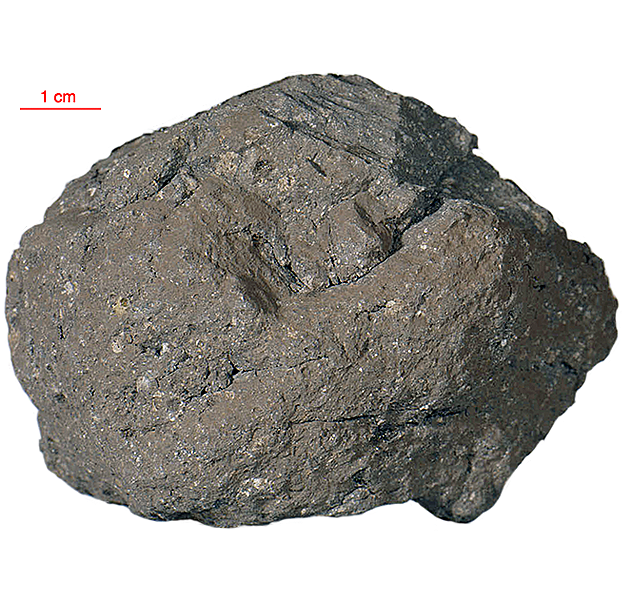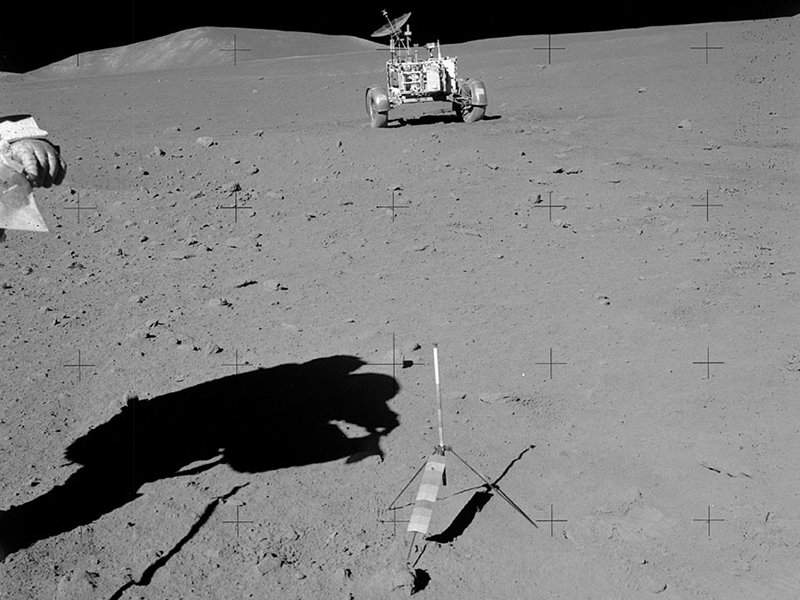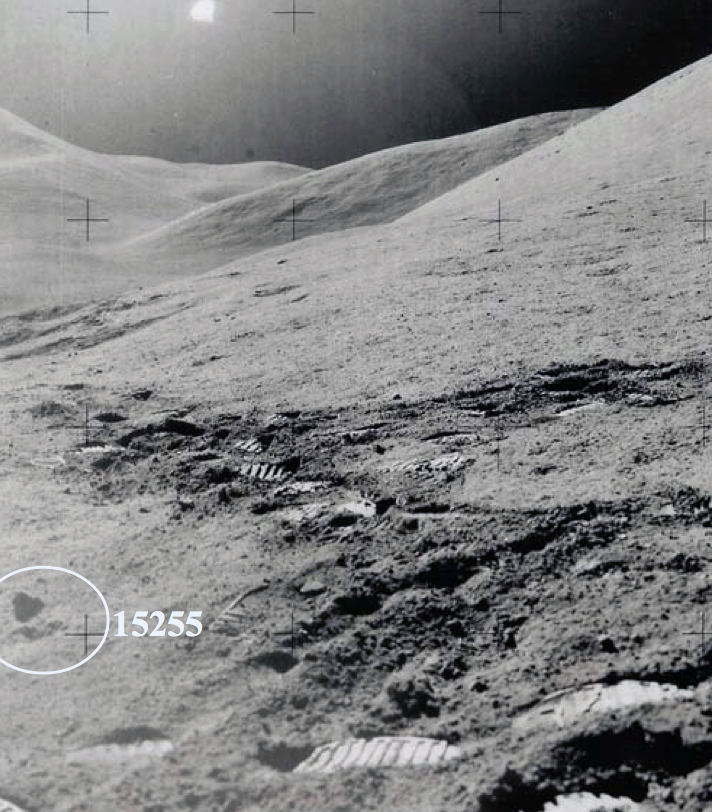
Fact sheet
15255 and 15257 are a coherent clast-rich breccias with fine-grained dark matrix. The texture and high content of rare gas confirms that it is a regolith sample. They are “typical” regolith breccias. These two samples were returned in a bag that also contained a large basalt (sample 15256). They both contain a thin vesicular glass splash on one side, although this is not immediately obvious from the thin section.
Rotation 1 shows a basalt fragment plus a sub-rounded piece of mustard-yellow glass. Rotation 2 also contains a basalt fragment that is accompanied by a shocked fragment of plagioclase (anorthosite?).
The sample weighed 240.4 grams before analysis and has not been dated.
Further details of this and other Apollo samples are here: http://curator.jsc.nasa.gov/lunar/
The Apollo 15 landing site was in the Apennine Highlands, and close to Hadley Rille — a long, narrow winding valley. Approximately 76 kg of lunar material, including soil, rock, core-tube and deep-core samples, were returned to Earth.
This mission was the first flight of the Lunar Roving Vehicle which allowed the astronauts to venture further from the Lunar Module than in previous missions. During three periods of extravehicular activity, or EVA, on July 31st, and August 1st and 2nd, Scott and Irwin completed a record 18 hours, 37 minutes of exploration, travelling 17.5 miles, in the first car that humans had ever driven on the Moon.
Apollo 15 was launched on 26 July 1971.








